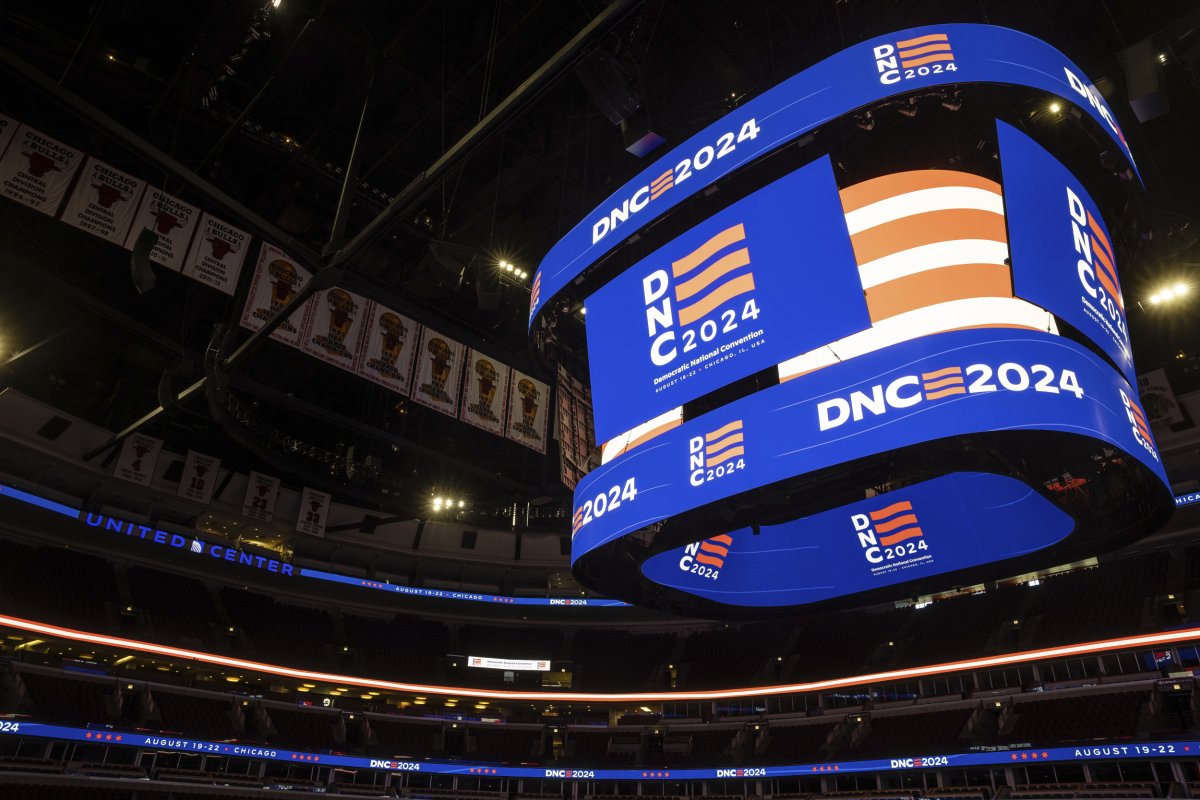
Republicans have unified around Donald Trump as he gears up to face Vice President Kamala Harris in November’s presidential election.
Across the nation, U.S. citizens hold a wide spectrum of political beliefs. Some citizens lean more to the right and identify as Republicans with conservative values. Others favor the left and support the more liberal and progressive Democratic Party.
While some states are pretty closely divided, there are others where most of the residents support one of the two main parties.
Newsweek has created this map to show which U.S. states have the highest number of Republican voters.
The data gathered by the World Population Review is measured through the Cook Partisan Voting Index, also known as the CPVI. This measures how strongly a state leans toward Republicans or Democrats compared to the entire nation. The index is updated following each election in the country.
The CPVI is calculated by looking at the average Democratic or Republican share of the last two presidential elections compared to the national average. Results are broken down by congressional district and by state. This data helps determine which states lean more towards the GOP or the Democratic party.
Wyoming’s unwavering loyalty to the Republican Party has been consistent since 1952, except in the 1964 election. In the latest rankings of the most Republican states in 2024, Wyoming emerged as the most Republican-leaning state in the nation, according to the data.

The Republican National Committee logo at the North Charleston Coliseum. Republicans have unified around Donald Trump for 2024.
Rainier Ehrhardt/AP
Wyoming has a CPVI of +25, and the statewide political landscape is heavily influenced by its large rural, white and evangelical populations. In the 2020 presidential election, 69.94% of constituents cast a ballot for Donald Trump, and 26.55% voted for Biden. In the 2016 presidential election, 67.4% of voters in Wyoming supported Donald Trump.
Close behind Wyoming is West Virginia, with a CPVI of +22, showcasing a significant shift towards Republican dominance since 2000.
Republican State Senator Donna Boley is the longest-serving state senator in West Virginia’s history. She is competing in the 11th election of her political career.
Boley explained the state’s historical shift in public attitudes and told Newsweek: “West Virginia was a blue state for 80+ years. I was appointed to the West Virginia State Senate in 1985. In 1991-92, I was the lone Republican in the Senate. Today we have 31 Republicans and three Democrats. The House has 88 Republicans and 12 Democrats. Since the 2014 election, we have been the majority party, and we have had a very successful 10 years with our conservative legislature.”
State Senator Laura Chapman told Newsweek: “West Virginia is a conservative state when we had mostly registered Democrat voters. Things changed when the national Democrat policies came after our industries and our jobs. The national Democrat party has moved so far left that it has pushed our conservative state firmly into the red column.
“Regardless of where people live, we are all Americans with a shared culture. People will support their elected officials as long as they reflect common American values. If politicians forget or ignore those shared values, the people will seek other leaders, much as the voters in my state chose new leaders over the last few election cycles.”
North Dakota ranks third with a CPVI of +20, reflecting its long-standing Republican voting history in presidential elections since 1968.
Oklahoma and Idaho follow closely, both with strong Republican inclinations. Oklahoma has consistently voted Republican since 1952, except in 1964, while Idaho’s stance is driven by fiscal conservatism.
The rest of the top 10 include Arkansas, Kentucky, South Dakota, Alabama and Tennessee.
These states have consistently leaned Republican in recent elections, emphasizing a broader trend of strong Republican support in rural and conservative regions of the United States.
On the other end of the spectrum, the state with the lowest number of voters who identify as Republicans is Vermont. Vermont has a CPVI of -16, which suggests voters favor progressive values embedded within the Democratic Party.
Massachusetts, Maryland, Hawaii and California round out the top five states that lean more toward the left.

The United Center, the site of the 2024 Democratic National Convention, in Chicago on May 22, 2024. The state with the lowest number of voters who identify as Republicans is Vermont.
Francis Chung/POLITICO/AP
Veteran Democratic lawmaker John Arrison of the Vermont House of Representatives told Newsweek he has “no desire to live anywhere else” due to the state’s left-leaning political outlook. He cited Eugene McCarthy, George McGovern and Jimmy Carter as inspirational figures who drove him to align with the Democratic Party.
“Vermont politics changed dramatically in the late 1960s and 70s. Did Richard Nixon and the Vietnam War have an effect, perhaps? Let me quote our late Senator James Jeffords when he changed allegiances: ‘I did not leave the Republican Party; the Republican Party left me.’ There are still old-school Republicans in Vermont, but they are being drowned out by the MAGA crowd.
“Vermont shifted to the left again in the 1970s. Ski areas were rapidly expanding, and leadership and citizens saw the need to preserve Vermont’s unique qualities. Nobody wanted Vermont to become New Jersey.
“He argued that legislation passed by Republicans in the past pushed Vermont further to the left.
“Progressive laws made Vermont attractive to people with like-minded values. Thus setting the stage for people moving into the state who appreciated the direction Vermont is headed.
“Vermont is a small state and population, but we still have a political divide. The Burlington area is the most progressive, and pockets are not so scattered throughout. So why is Vermont leaning so far to the left? Simple to use a cliche: ‘Birds of a feather flock together’.”
Do you have a story we should be covering? Do you have any questions about this article? Contact [email protected]
 Print
Print




